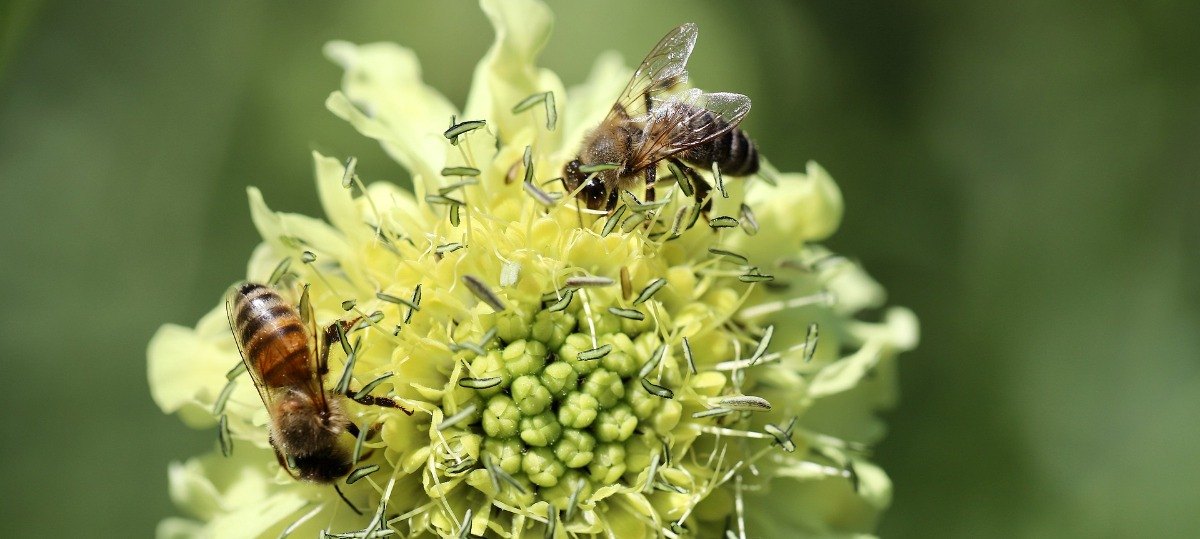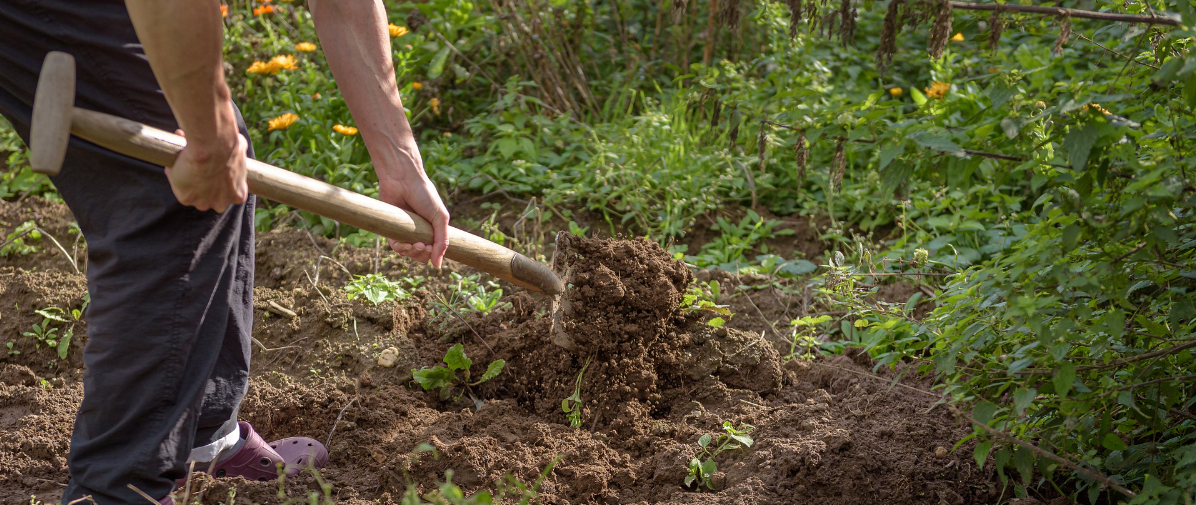Have you considered: what are the stages in gardening? We look at the life cycle of plants and the steps to growing a vegetable garden.
There are many different stages to plant growth and managing your garden space which first-time gardeners often gloss over. To improve your plant growth stage and have a healthier garden to show your friends and family, keep reading this article.
Life Cycle of Plants
The plant life cycle begins with seeding but has five stages. All the stages are crucial to new plants and their chance at survival.
The cycles are:
- Seed
- Germination
- Growth
- Reproduction
- Pollination
As seeds fall to the earth and to the soil, the plant's life cycle begins. These different stages see the plants change over time, through seed germination and into sprouting and growing flowers and fruit.
Plants are also known as angiosperms, and these are some of the most sophisticated plants and can attract pollinators and disperse seeds with precision and efficiency.
Stage One - Seed
This stage is crucial for the plant's development, and these seeds are stored full of food and energy for their nutritional needs. Before the seeds hit the ground and begin developing, they can last many years, with the nutrients inside good to go for extended periods.
However, before being planted, you should ensure to pick plants that are right for your garden, or whether you want indoor or outdoor planting plants.

Stage Two - Germination
Given the right circumstances (direct sunlight, full sun and the right soil quality), the seeds can then begin to germinate, growing into a plant.
After planting, leaves will begin to appear, and the plant's root system is already growing under the earth, with the stem starting to take shape.
The roots underneath are crucial for future survival, as healthy roots improve the absorption rate of nutrients. Once leaves have been created by the plant, the process of photosynthesis can begin, producing food for the plant.

Stage Three - Growth
The next stage of the plant's life cycle is growth, blooming and flowering into something more. When prepared in a nursery, the seedling can be transferred to a pot or bed and will require care during this stage.
The seedling needs food and nutrients, and a lot of them while it produces new branches and leaves. One of the biggest mistakes at this stage is abandoning the plant, believing it's doing fine without your intervention.
In the same way, any young animal needs to eat and requires care; you must be feeding your plant and caring for it while it undertakes a lot of new growth.

Stage Four - Reproduction
This is another important stage in the life cycle, as the plant now begins forming buds and plants. All twigs, branches and strips stop growing now, and the buds blossom into plants and flowers.
It's crucial at this stage that the plant receives sulphur and magnesium to continue growing and remain healthy.
Pollination
The final stage of a plant's life cycle is pollination. This is the process of transferring pollen from one plant's stamen to another stigma.
Pollen from the male anther plant is carried to the female stigma plant. Many plants can self-pollinate, but pollen is typically transported by insects, rain, birds and the wind.
The green pigment in petals and leaves attracts bees, butterflies and insects (even bats aid pollination in certain plants), where they consume nectar while the pollen collects on their bodies. As the bees travel to other plants, they leave pollen residues around, helping the plant pollinate.

Gardening tips
While your plants can do a lot of the growing themselves, you do need to give them support and feed them. If you're new to gardening, here are our tips for ensuring your garden stays healthy, and your plants thrive:
Store your seeds
As said above, seeds can grow and survive after many years when kept in the right conditions. If they are stored in a dry and dark location, you can plant your excess seeds for a later date.
Plant seeds deeper
When planting new seeds, try planting them deeper in the soil. Topsoil can be dehydrated after being hit by direct sunlight, so planting them deeper can help prevent the root systems from being dried out.
Use fertiliser
Using fertiliser is a fantastic way of promoting growth in your new plants. Such products are most effective when the plant is in its peak growth cycle, the vegetative stage.
In Springtime, you will notice more benefits to fertilising your plants. Nitrogen is required to produce chlorophyll (green pigments) in leaves, so you can add nitrogen fertiliser to the soil to boost the pigments.
Early morning water
Implementing daily watering into your schedule will help keep your plants healthy. In the same way, drinking water in the morning can be beneficial for humans; it's the same for plants.
Watering your plants in the early morning can help them become hydrated before the daytime heat.

Invest in good soil
Your soil quality is the main ingredient to producing healthy plants. Whether you're harvesting fruit and vegetables, the organic materials found in healthy soil can make the ripening stages more fruitful and create more nutritious produce.
Pay attention to sunlight
Gardens and plants require sunlight, but too much can make them dry out. If your plant feels dry, your yard could be receiving too much sunlight.
One thing that beginner gardeners forget when starting their planting journey is to watch the sunlight in their yard. Finding the perfect spot for your garden is crucial in the success of the plant's life.
Steps to growing a vegetable garden
More and more homeowners each year are turning to home-grown fruits and vegetables, realising how different they taste. Vegetable gardens are popular, but mastering them does take time.
Here are our steps to growing a successful vegetable garden:
Start Small
One of the biggest mistakes that first-time gardeners make is spreading themselves too thinly over a large area. When planning, designing and planting your first garden, start small. A place of 6 x 8 feet should be enough for beginners, and you can build up from there.
As you accumulate more seeds and knowledge, you can plant more fruits and vegetables and begin watering them in your routine. Start your area with a water source, whether using a hose or watering can, and ensure the site receives enough sunlight.
Close proximity to your house is ideal as you will be able to manage and harvest the products more efficiently.
Break up the soil
Setting the stage for your garden is crucial, and you will need to break up the soil and remove weeds and stones before you can start planting.
Using a garden spade or metal pitchfork will ensure the ground is truly broken up, and your plant's roots can start strong when planted. If you want to add organic materials and compost to the soil at this stage, you can do that as it will promote more growth.
Pick Plants and Supplies
Depending on the size of your home and garden, you should pick plants that won't grow too large. You should also start with vegetables that are easier to grow, improving your ability and confidence over time. We recommend you start with:
- Cucumbers
- Peppers
- Tomatoes
- Lettuce
- Sage
- Thyme
- Basil
When at the garden centre, grab yourself a bag of potting soil, compost and peat moss, as these can help give your plants the best start in life.
Keep an eye on your plants.
This may sound obvious, but you should monitor your plants as they grow. Watching for any diseases or discolouration on the leaves, wilting and insect damage can prevent you from losing time and money in the long run.
Fruit should be picked when it's ripe, as leaving ripe fruit on the plant can encourage disease and pests to feed on them. Consider installing mesh or wire around the taller plants as deers, rabbits, and birds will attempt to reach them and destroy your garden. Large plants may need staking to keep air flowing around the leaves.
Harvesting your vegetables
Finally, enjoy your vegetables and fruits by harvesting them when they're ripe. Many first-time gardeners get shy about picking their new vegetables, afraid they're doing it too soon.
As long as you know they are ripe - they're yours to eat! Use a sharp pruner, and don't forget to deadhead plants as they grow, not only for aesthetics but for plant health and to encourage future growth.
We hope you found our article on essential gardening tips useful. Our lawnmower services are here to help you maintain your garden.
Are you looking for lawnmower spare parts in Northampton? Get in touch today! We are the premium provider of lawnmowers and ride on mowers in Northamptonshire.

